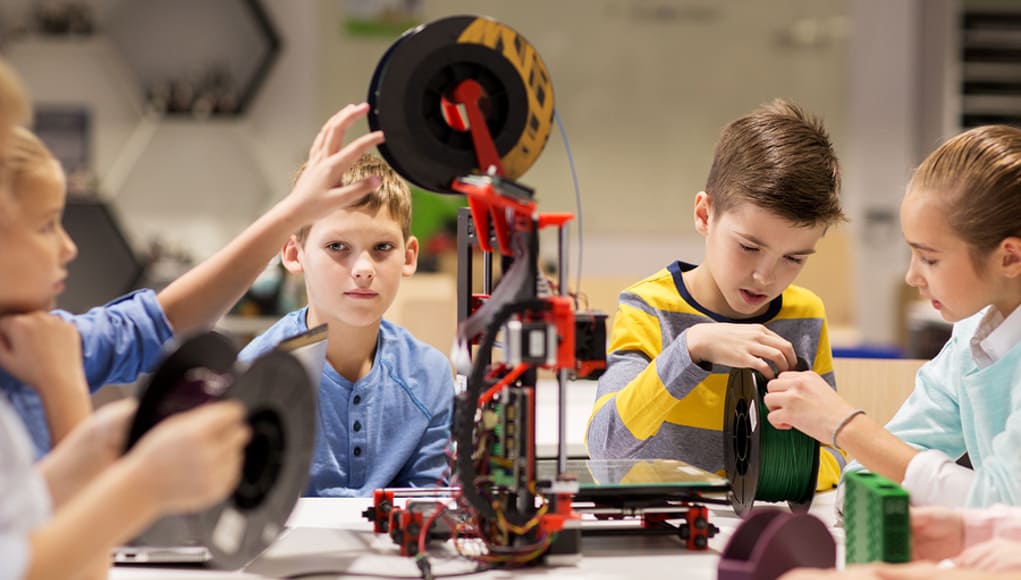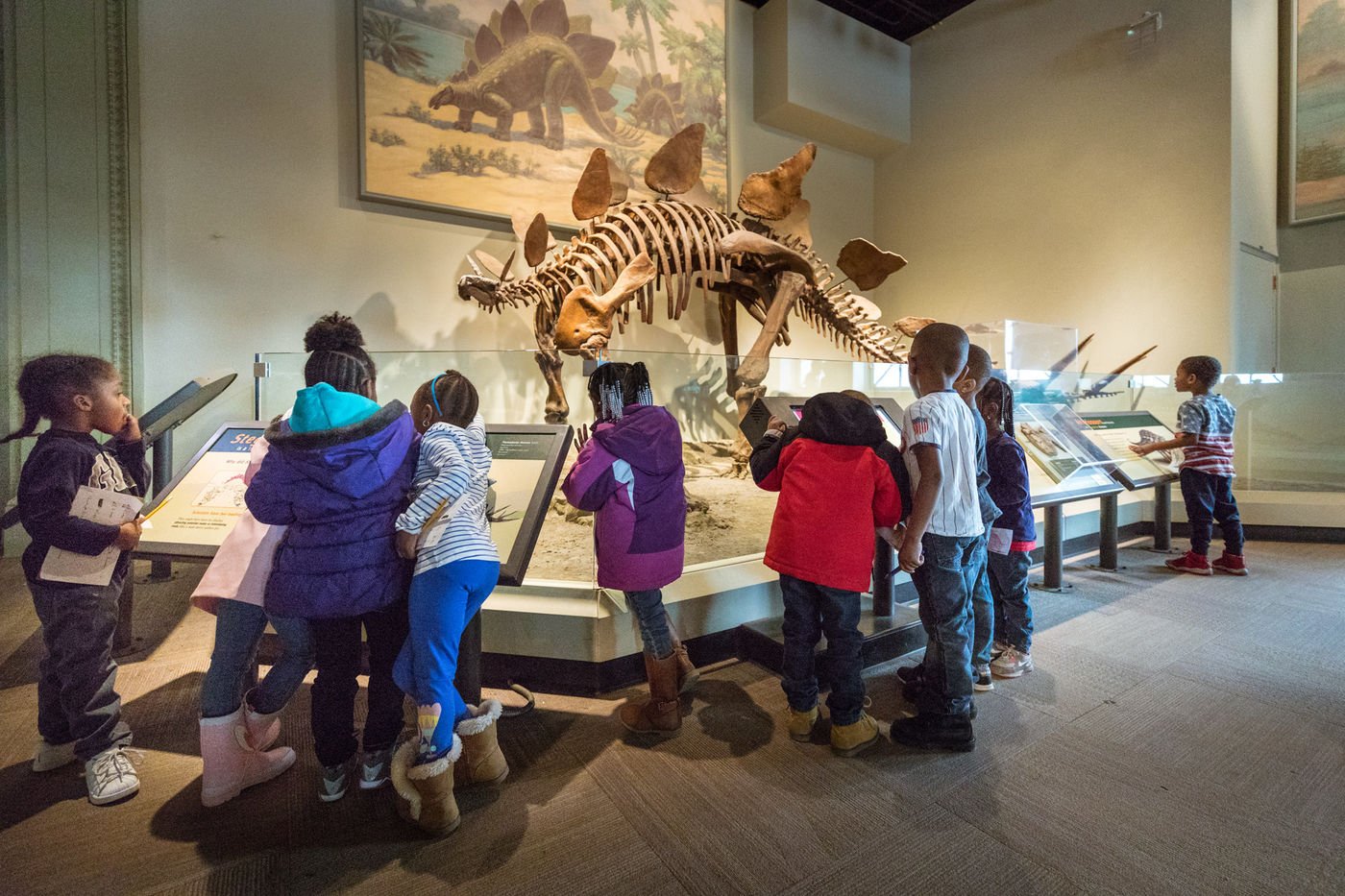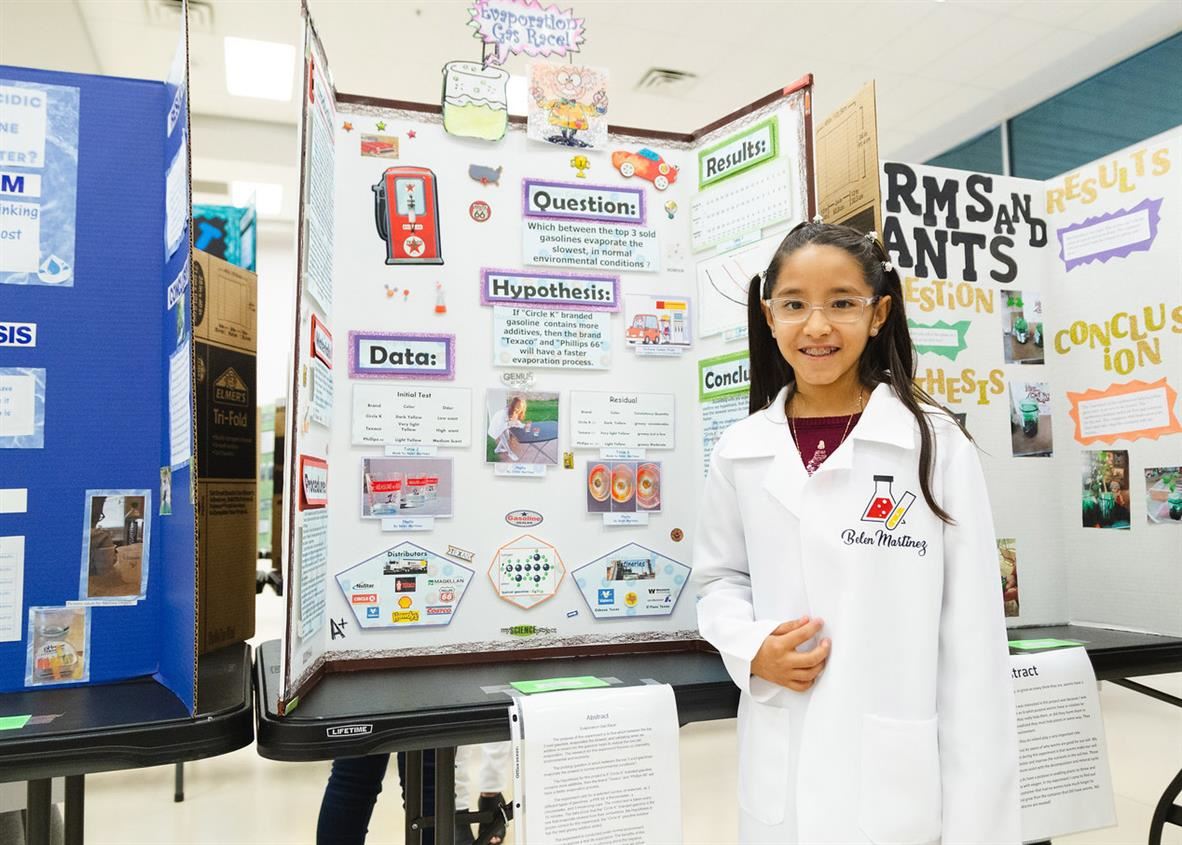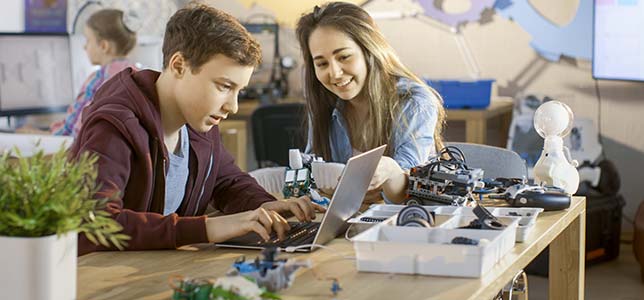Gone are the days when students were expected to sit passively at desks while teachers lectured endlessly, expecting children to soak up the information being thrown at them.
In today’s educational environment, students are expected to collaborate, think critically, and work together to develop innovative projects and answers to complex questions. To support this mission, many schools have begun to take part in a practice known as Project-Based Learning (PBL).

PBL allows teachers to expose students to a wide variety of 21st Century skills, and allows students to interact with curriculum in a way that is engaging, authentic, and fun!
Making a shift from traditional forms of learning to PBL can be challenging. PBL can require a lot of prep work on the part of the teacher. But the gains in student engagement and achievement are immeasurable. Here are four steps to help you create a Project Based-Learning classroom.
By Lauren Ayer, M.Ed.
1. Begin At The End
This is where the teacher-prep comes in. When planning a project, begin with the end in mind.
- What content do you want students to understand by the end of the project?
- What 21st century skills will they be expected to gain?
- How will new information be presented to learners?
- What will be the end product of your project to showcase what students have learned?
Planning project based learning takes time. Coming up with new ways to present information and showcase student learning can be a challenge. Luckily, there are a lot of resources available to get elementary, middle, and high school teachers thinking about what their students can accomplish.

2. Help Students Develop Questions
So you’re ready to start your project. Keep in mind, with project-based learning, students are driving a lot of their own learning. Teachers are there to facilitate learning and guide students toward answers to their questions—not to answer the question themselves.
Begin, then, by generating questions:
-Find out what students think they know about a topic. Brainstorm and record all of these ideas (Even if what students think they know is inaccurate. Resist the urge to correct. Let students discover their mistakes for themselves through the project process).
-What do students want to know? Record all of their questions on a chart or other visual.
-Finally–and most crucially–help students use your questions as models to develop their own questions.
Once students have questions they want answered, start with the largest content ideas first:
-Go on field trips. Think beyond traditional museums and exhibits. If your class is studying the skeletal system, visit a nearby hospital or orthopedic office. If you’re studying economics, visit a local business.
-Invite guest experts to come share what they know. Call on students’ parents, friends, or local community members to share their knowledge.
-Provide engaging opportunities for students to engage with the topic. This may come in the form of a webquest, reading, online games, interactive activities, or experiments.
At this stage, you want all students to be exposed to the bulk of the content. They are searching for answers to their own questions and discovering what this project is all about.

3. Help Students Understand To Think Like An Expert
This is where student choice comes into play. Students get to hone in on one aspect of the project topic in which they are most interested. They find out everything they can about that topic in order to share it with others. For example, if your class is studying landforms, a student may choose one landform to learn more about. He/she may choose to focus on the Nile River—what is its significance? What impact does it have on the community around it? What recreational and economic opportunities exist as a result of its existence? How did it form, or how long has it been a major resource for Egypt?
The questions can get as specific as you allow. This is when students discover that not all of their questions will have answers. They will have to explore a variety of resources and synthesize information. 21st century skills of critical thinking and problem solving, flexibility and adaptability, and productivity and accountability will be on full display during this stage.

4. Help Students Present, Publish, and Perform
This is the end that you, as a teacher, started with when you were planning.
During this final stage, students will be required to organize all of the information they have gathered in order to share it with others. This holds students accountable for all of the learning they have done to this point. They will have the opportunity to use the 21st century skills of creativity and innovation, communication and collaboration. Students may be creating a life-size model, making a brochure persuading people to visit a particular landform, creating their own business, reenacting an experience they were part of during the field experience, or any multitude of presentations. They will study and critique each other’s work to ensure that they are presenting their best product.
Invite others to come see what students have learned. Invite students in other grades who are studying similar topics. Invite parents, administrators, community members, and the guest experts that helped you in the beginning. Or go out into the community to present your project to those who would be interested in the results of your projects! Students will practice communication and presentation skills. You will be amazed by how well students perform when they are engaged in a topic and held accountable for their learning.

Project-Based Learning is a fun way for teachers to facilitate learning and engage students. It can be implemented at any level of learning, and builds on both content standards and 21st century skills. It allows for topics to be integrated across content areas, and promotes collaboration among students and teachers. PBL encourages students and teachers to be creative, and innovative, and think about long term retention and application of knowledge. As a teacher, you will be responsible for a lot of planning and preparing, but it will be totally worth it for you and your students!
Want to discover more STEM tools for PBL Learning?
Check our products page and start planning your STEM lessons with RobotLAB! and our learning Platform EngageK12!

This article is original from TeachThought : https://www.teachthought.com/project-based-learning/4-things-project-based-learning-teachers/



